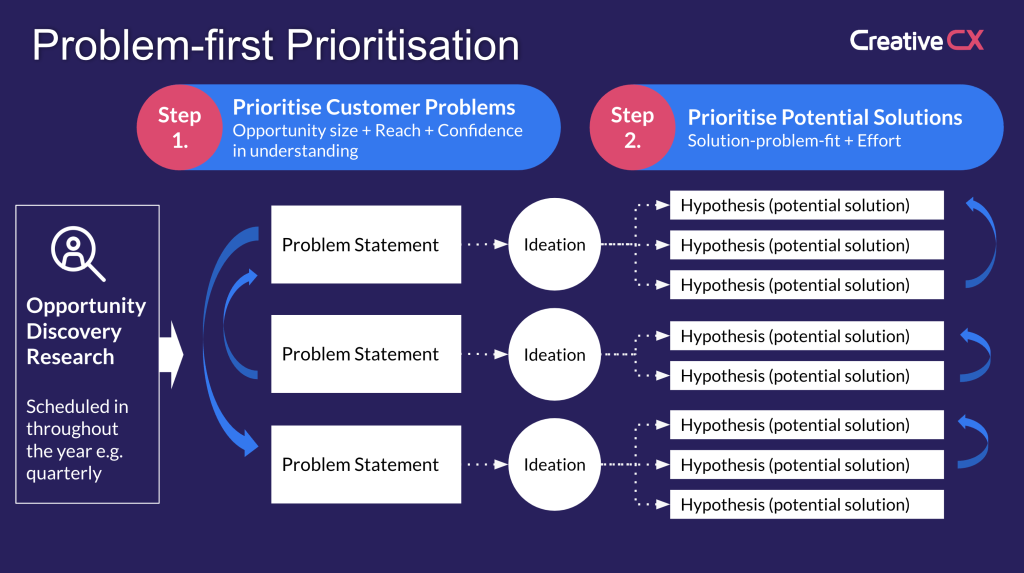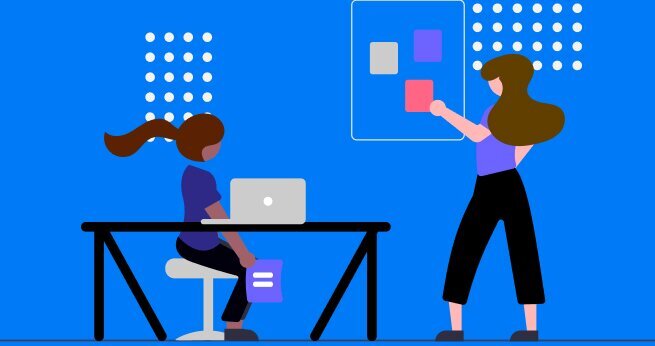The VWO CONVEX 2024 event was an exciting opportunity to learn from a diverse range of experts, each at different stages of their digital experimentation journeys.
Our CXO, Chris Gibbins, featured multiple times throughout the event, speaking with a couple of our Creative CX clients.
He sat down with Annette Rowson, Digital Optimisation Lead at Primark, to discuss their bold step into digital experimentation. Then, he explored personal journeys with Vicky Routley, CRO Manager at easyJet, as well as conducting a workshop on insights-led personalisation, focusing on the ‘whys’ and ‘hows’ of driving effective personalisation strategies.
For those who couldn’t attend, we wanted to recap some of the key takeaways, starting with Primark’s journey into digital experimentation. We’ll be dedicating individual blog posts to each of these sessions from VWO CONVEX, so look out for more insights from easyJet’s personalisation strategies and Chris’s workshop on personalisation.
Primark’s Digital Journey
With a rich history rooted in traditional retail, Primark, a popular fashion brand renowned for its in-store shopping experience, is making significant strides into digital.
Traditionally, the retailer focused on its physical stores, but with changing consumer behaviours and the growth of online shopping, they recognised an opportunity.
Annette Rowson sat down with Chris Gibbins to open up about the challenges and opportunities of transitioning the business to digital, specifically through their Click & Collect service.

Annette shared that, “Pre-Annette era in Primark, there was a business case put together for Click & Collect (…) we wanted to bring in an offering that would aid us in playing with the digital market.”
The Click & Collect initiative, which started in a small number of stores in 2020, has since expanded across London and is set to cover all of Great Britain by the end of 2025.
This ambitious rollout illustrates Primark’s commitment to integrating digital strategies within its established retail framework.
The Role of Data in Driving Business Decisions
A pivotal element of Primark’s digital transformation has been the focus on data-driven decision-making.
Annette discussed how she spent her first year focusing on the importance of installing a culture of experimentation within the organisation, stating, “I spent the first year in my role driving a data-driven culture (…) making sure that people are instilling that data-driven experimentation mindset.”
The initial stages involved aligning stakeholders across various departments such as merchandising, content, and SEO with the new experimentation mindset. Annette emphasised that fostering this culture was not just about preaching the idea, but also about implementing practical changes.
A key element of this approach has been a shift toward Problem-First Prioritisation, a passion project at Creative CX and something we love to support our clients with.
This approach along with regular Opportunity Discovery Research ensures that a greater number of ideas are focussed on solving real customer problems which leads to higher win rates and more impact for the business.

You can read a more in-depth article about our Problem-First Prioritisation approach here.
The integration of server-side testing into their approach has also been a significant achievement. Annette reflected on this process, saying at the outset she felt like she was “selling” the idea of experimentation, but she soon realised that real progress came when they started embedding experimentation specialists directly into product squads.
By integrating these specialists into squads, experimentation became a core part of daily operations, creating a shared roadmap that aligned business goals across teams.
This collaborative framework not only improved the alignment between different teams, but also led to better communication regarding priorities and decisions.
For example, when prioritising and implementing server-side tests, the team’s shared understanding of key business metrics reduced miscommunication.
By August, when this was recorded, the project had already seen success with ten tests completed, two of which were server-side, demonstrating the shift in mindset across product owners and developers as they increasingly embraced an experimental approach.
Since then, they’ve continued to build momentum, boosting their monthly testing velocity to nearly eight tests per month. This alignment not only enhances their experimentation capabilities, but also ensures that teams remain focused on shared business goals.
Insights Surgery
When asked by Chris what kind of advice Annette would offer to businesses looking to adopt an experimentation mindset, she stressed the importance of focusing on the cultural shift first:
“You have to know what capabilities you have and bring people on that journey.”
To support this shift, Annette introduced a weekly data and insights surgery – an open-door session where anyone in the organisation can ask for guidance on topics like setting up dashboards, or using analytics like Contentsquare.
Annette emphasised the value of this approach, noting: “That open-door policy is so important,” as it helps create an inclusive environment where employees feel empowered to engage with data and experimentation.
Ideation Workshop


One of the standout initiatives discussed during the session was the ideation workshops that Primark have implemented.
In addition to internal workshops, in partnership with Creative CX, Primark hosted an experimentation day that involved teams from other brands and the wider community.
This event expanded the concept of ideation on a larger scale. Participants viewed moderated usability session videos, collaborated to solve real customer problems, and presented their ideas to the room. To encourage engagement and creativity, prizes were awarded for the best presentations.
Annette shared a memorable moment from the event workshop, where they conducted real-life interviews with customers for UX insights. One particular interviewee was utterly shocked to learn that Primark even had a website! Her surprise only grew when she discovered the Click & Collect offering. “The joy on her face was just next to nothing,” Annette recalled, highlighting the genuine excitement around Primark’s digital shift.
End-to-end Opportunity Discovery Research carried out with their real target audience like this is crucial because, as described, it allows businesses to capture raw, authentic customer reactions – providing insights that quantitative data alone can’t reveal.
This type of research when carried out regularly help businesses understand how their products and services are used, perceived, and where there might be gaps in ease-of-use, awareness, or understanding.
By ideating from these qual & quant customer problem statements based on solid research, it’s then guaranteed that the resulting ideas will be evidence-based and focussed on what matters most to the customers and the business. Through this particular workshop, Primark generated around 35 hypotheses in just one session, demonstrating the untapped potential of collaboration and creativity within a team.
“You’re using qualitative and quantitative data to come up with problem statements, and ideas to create hypotheses,” Annette explained.
This approach not only motivates employees, but also helps break down silos, facilitating cross-departmental collaboration that is essential for driving successful experimentation.
Conclusion: A Bright Future for Primark
Creative CX is very proud of the work we’ve done to help Primark with its journey into digital experimentation. This reflects their strategic commitment to evolving alongside changing consumer behaviour and market demands. By embracing experimentation, data-driven decision-making, and collaborative efforts, the brand is laying a solid foundation for continued success in the digital space.
Annette’s insights at VWO CONVEX 2024 emphasise the importance of encouraging a culture of experimentation, a topic that is frequently discussed within the experimentation community. While many of us advocate for this cultural shift, it’s so important to hear firsthand accounts from businesses like Primark that have openly shared their journey from the ground up.
As we look forward to seeing the future of Primark and their ambitious Click & Collect journey, we’re excited to witness how their commitment to experimentation and digital scales and evolves.
For the full interview with Chris and Annette, you can watch the video here.



